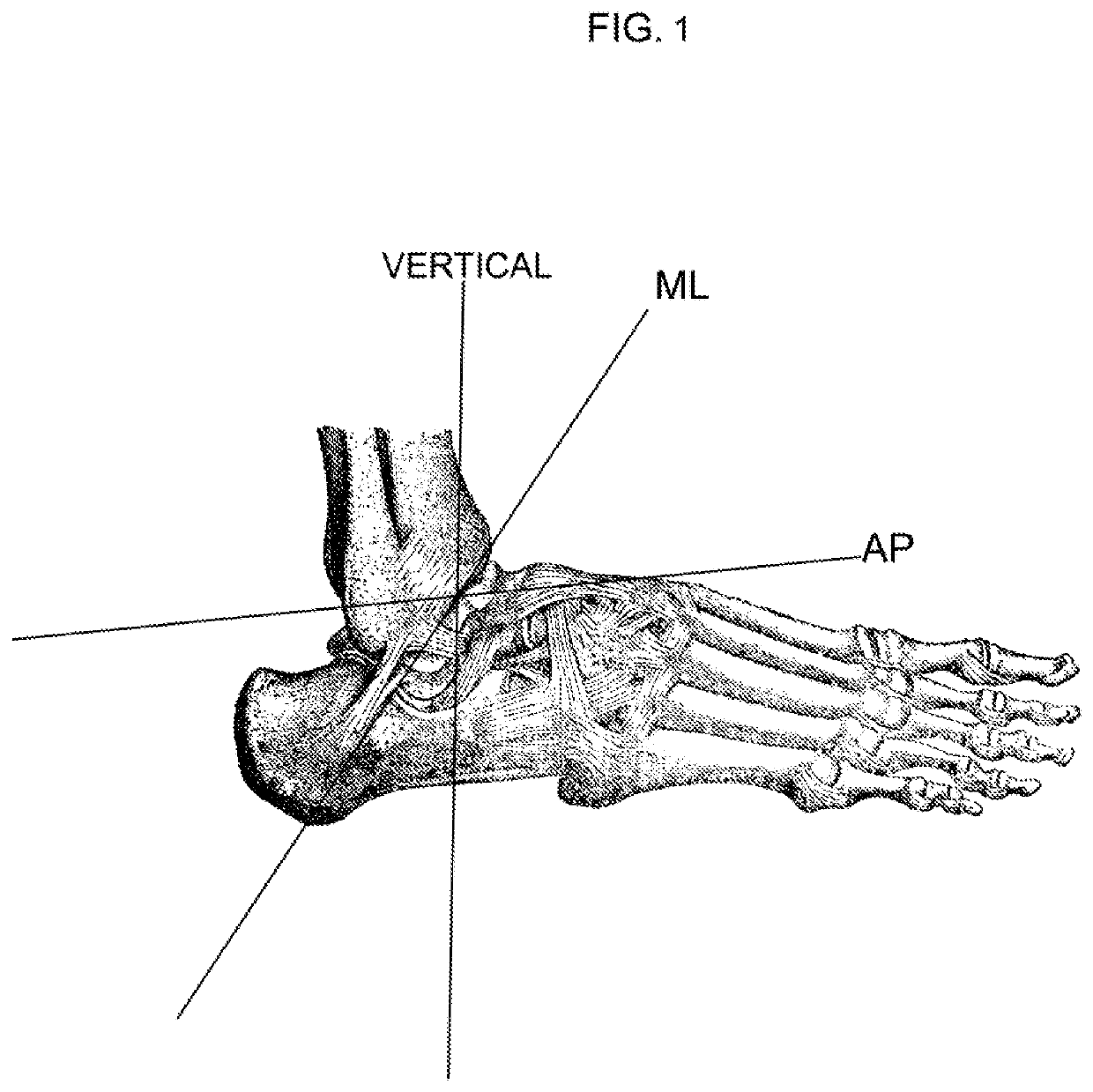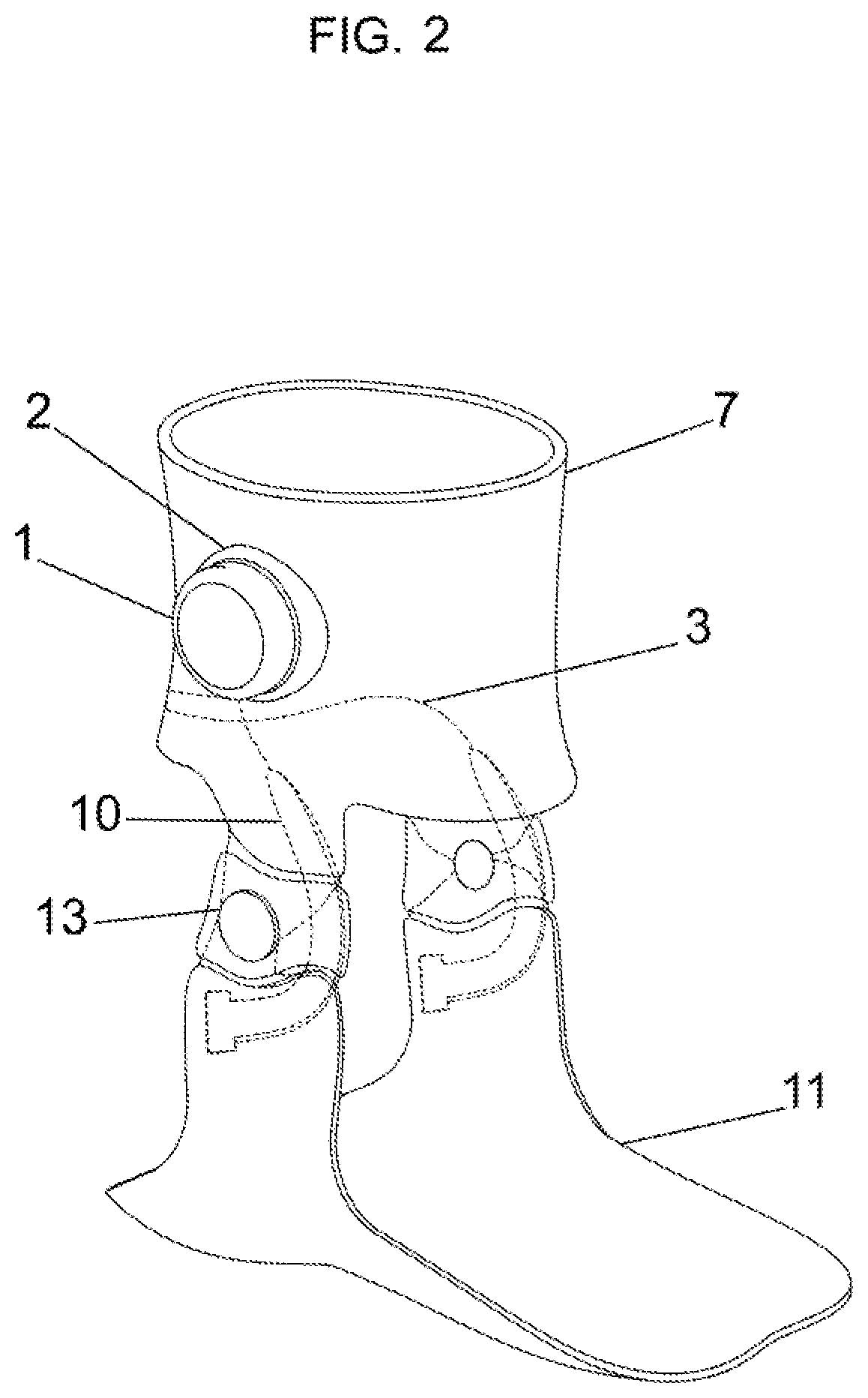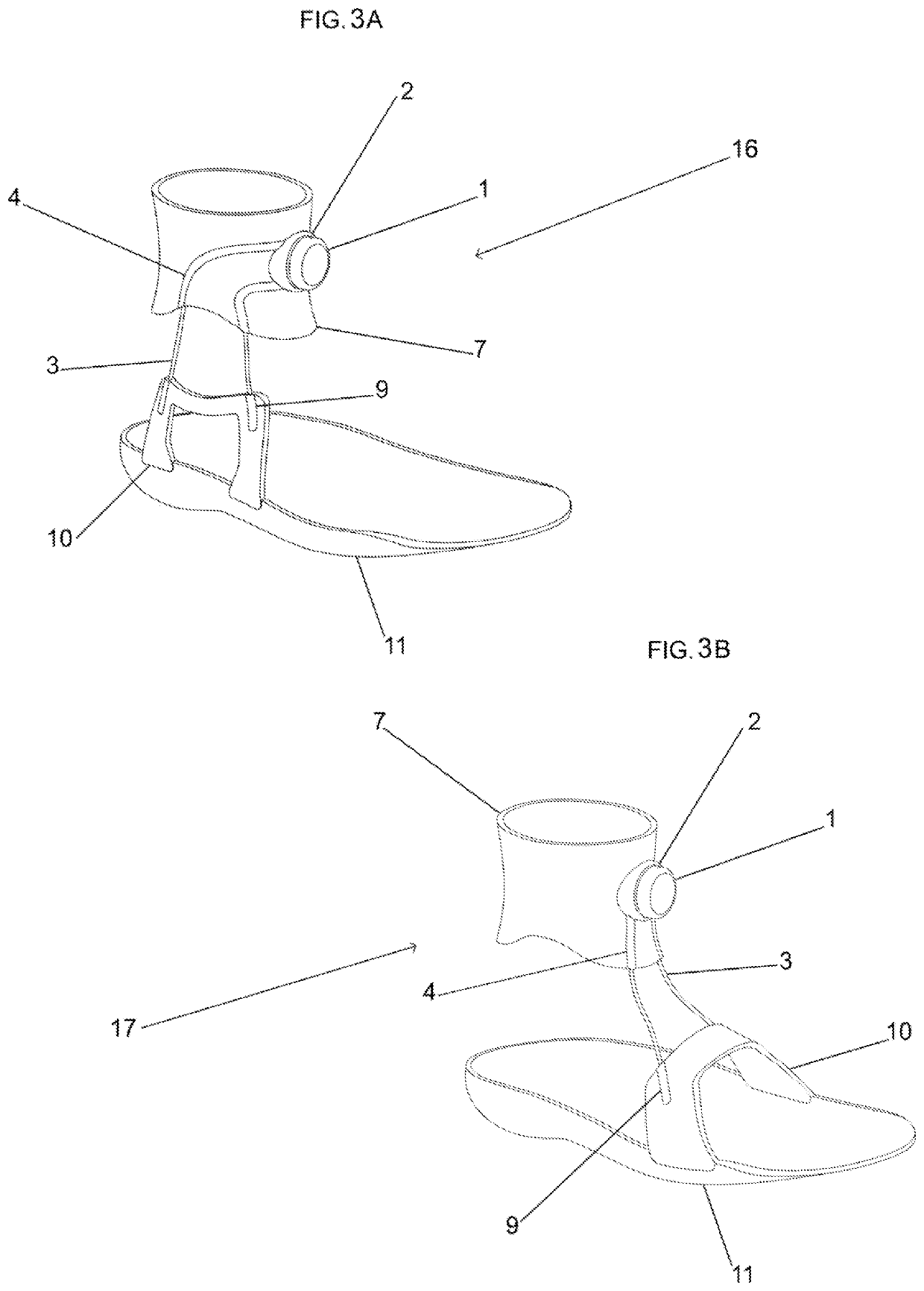Ankle orthosis
a technology for ankles and bones, applied in the field of ankle bones, can solve the problems of recurrent instability and associated defects, largely underreported sprains, and unable to meet the needs of patients, and achieve the effects of low cost, high efficiency, and high efficiency
- Summary
- Abstract
- Description
- Claims
- Application Information
AI Technical Summary
Benefits of technology
Problems solved by technology
Method used
Image
Examples
examples
Preferred Embodiment One: Multi-Axis Rotation Control Ankle Brace with Proximal and Distal Portions and Hinge
[0057]Preferred embodiment one (FIG. 2) is comprised of a proximal cuff (7) and distal portion (11) connected by a hinge (13). The device contains an adjustable tensioning apparatus (3,9,10) that runs across the one or more hinge that is positioned medial and / or lateral to the ankle joint. The tensioning element in this case represents one type of energy storage element, in this case under tension. The tensioning element in this example further comprises a tensioning element (10), a rigid cable (3) and an adjustment mechanism (1). The adjustment mechanism (1), in this case a rotary dial, is embedded in an adjustable mechanism insert (2) within the proximal cuff (7). It may be held in place by the form of a locking mechanism, where the dial's male end is complementary with the female insert in the proximal cuff (7). It may be sewn or glued or otherwise bonded into the proximal...
embodiment three
Preferred Multi-Axis Rotation Control Ankle Brace with Sock and Cable Guide
[0070]Embodiment three is comprised of a proximal cuff (7) and a sock (6) that incorporates a tensioning element (1,3,4,5). (See, FIG. 4A) The proximal cuff may be connected to the sock e.g. by sewing, hook and loop, hooks, buttons, or other fasteners. The proximal cuff and connected sock may also be one continuously manufactured unit or material. In this embodiment, the tensioning apparatus is comprised of an adjustment mechanism (1), one or more cable (3), one or more channel or pathway, optionally a tensioning element such as an elastic band, and optionally one or more cable guide. The adjustment mechanism (1) and adjustment mechanism insert (2) are the same as described in embodiment 1 (See, FIG. 2). Similarly, the adjustment mechanism may be connected to one or more cables as described in embodiment 1. In the example shown in FIG. 4A, rather than connecting to a tensioning element as described in embodi...
PUM
 Login to View More
Login to View More Abstract
Description
Claims
Application Information
 Login to View More
Login to View More - R&D
- Intellectual Property
- Life Sciences
- Materials
- Tech Scout
- Unparalleled Data Quality
- Higher Quality Content
- 60% Fewer Hallucinations
Browse by: Latest US Patents, China's latest patents, Technical Efficacy Thesaurus, Application Domain, Technology Topic, Popular Technical Reports.
© 2025 PatSnap. All rights reserved.Legal|Privacy policy|Modern Slavery Act Transparency Statement|Sitemap|About US| Contact US: help@patsnap.com



